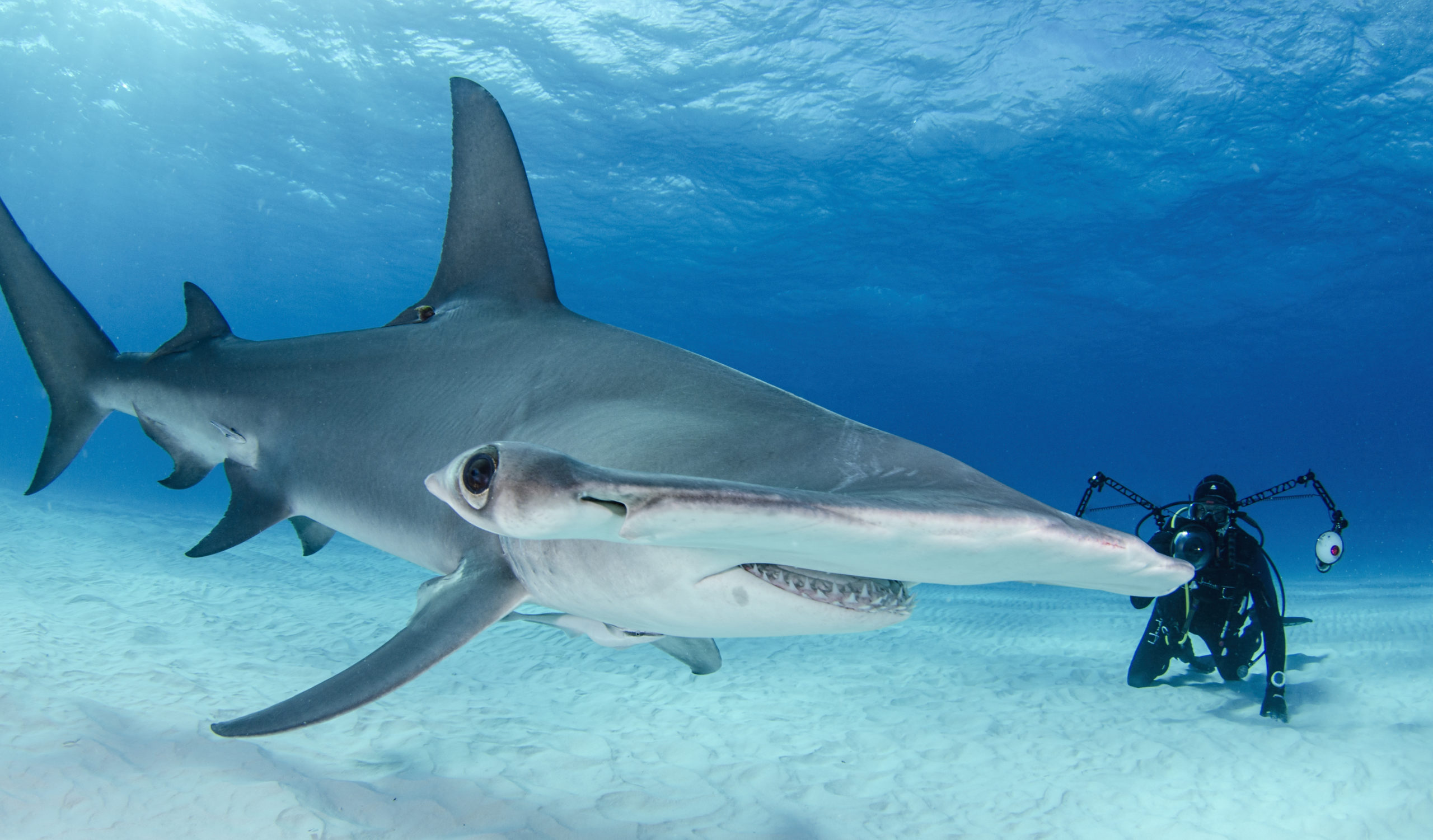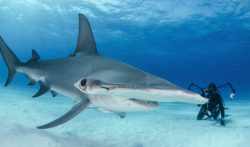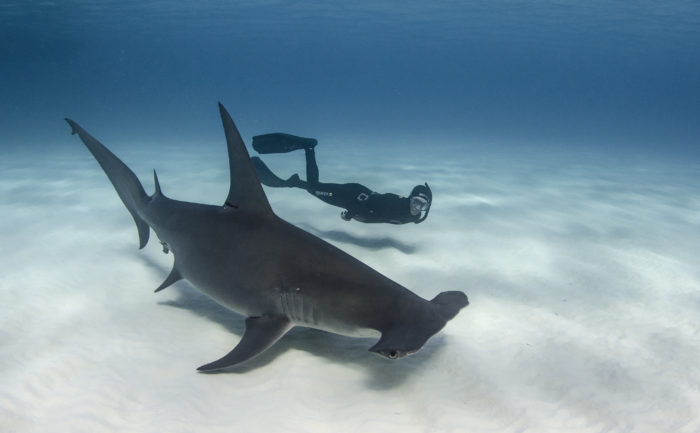
Sea Wonder: Hammerhead Shark

Photo Credit: Amanda Cotton/Coral Reef Image Bank
Cue the shark music — the Jaws theme song or Baby Shark — your choice! This sea wonder is dedicated to hammerhead sharks. Known best and named for their oddly-shaped heads, hammerhead sharks have a better visual range and can catch prey more easily than other sharks due to this unique feature. There are nine main species of Hammerhead Sharks that form the family Sphyrnidae, but they are more commonly grouped as hammerheads generally instead of by their individual species. This way of classifying them makes it hard for managers to access their threat level, conservation status, and develop effective conservation plans.
Description
Hammerhead sharks can reach up to 20 feet in size and weigh as much as 1,000 pounds! The odd shape of their head and positioning of their eyes gives them better visual acuity and range than most other sharks and allows them to spread their sensory organs over a larger surface area to help them forage. These sensory organs include the ampullae of Lorenzini (a network of pores filled with a gelatinous tissue), which allows the sharks to detect electrical fields created by their prey, sort of like a metal detector can identify buried metals.
Hammerhead sharks have a grey-brown to olive green coloration on their backs and white undersides, a pattern known as countershading which is common in marine species as it helps with blending into the environment. Atop their backs are one unusually tall (for a shark) dorsal fin followed by a smaller back dorsal fin closer to the fail. They have gill slits in front of their pectoral fins, and further along their belly are the pelvic fin and the anal fin near the tail on the animal’s underside.

Photo Credit: Amanda Cotton/Coral Reef Image Bank
The nine species of hammerhead sharks are:
o Winghead Shark
o Scalloped Bonnethead
o Whitefin Hammerhead
o Scalloped Hammerhead
o Scoophead
o Great Hammerhead
o Bonnethead
o Smalleye Hammerhead
o Smooth Hammerhead
Diet & Habitat
Hammerhead sharks live in temperate, subtropical, and tropical waters all over the world, especially along coastlines and continental shelves. We generally find them in waters less than 240 feet deep, including along coral reefs. Within the National Marine Sanctuary System, hammerhead shark species can be found near Channel Islands, Flower Garden Banks, Florida Keys, and Gray’s Reef national marine sanctuaries.
These carnivores are nocturnal hunters who prey upon different species of fish, squid, octopuses, crustaceans, smaller sharks and a notable favorite – stingrays. They are aggressive hunters but generally harmless to humans. To find prey, they will generally swim along the ocean floor and stalk their prey before using their heads as a weapon to pin down and weaken their prey.
Bonnethead sharks, a member of the hammerhead shark family, are the only sharks to have been observed with seagrass in their stomach, which may mean they are the only species of omnivorous (plant and animal eating) shark. However, scientists aren’t sure if bonnetheads eat seagrass on purpose or accidentally when hunting for animal prey.
Life History
Hammerhead sharks mate annually, and gestation takes between 10 and 12 months. Known as viviparous reproduction, females will carry fertilized eggs internally until the yolk sac runs out and the mother has to deliver nutrients to the embryos through a structure similar to a mammalian placenta. Hammerhead shark pups are born live and do not receive any parental care. A litter can consist of up to 40 pups but are usually closer to 12-15 pups in size. Occasionally, mother sharks will eat one or several of her young. The shark pups will swim together until they are older and large enough to survive independently.
Hammerhead sharks often form small schools and practice social behaviors when not hunting. Most species of hammerhead sharks migrate annually, some longer distances than others. The maximum lifespan for most hammerhead sharks is around 30 years old.
Threats & Conservation
Hammerhead shark populations vary in health and size, but face threats similar to many other marine species including habitat loss, climate change, pollution and the effects of coastal development, and they are especially vulnerable to overfishing – they are often caught as bycatch, or unintentionally, but are hunted illegally for their fins in some parts of the world. Thankfully, international efforts like the Convention on Illegal Trade in Endangered Species of Wild Fauna and Flora (CITES) promote the protection of hammerhead sharks.
